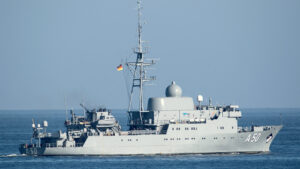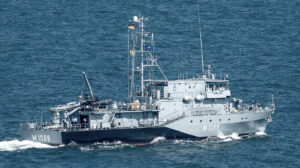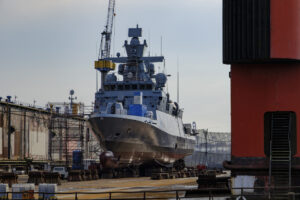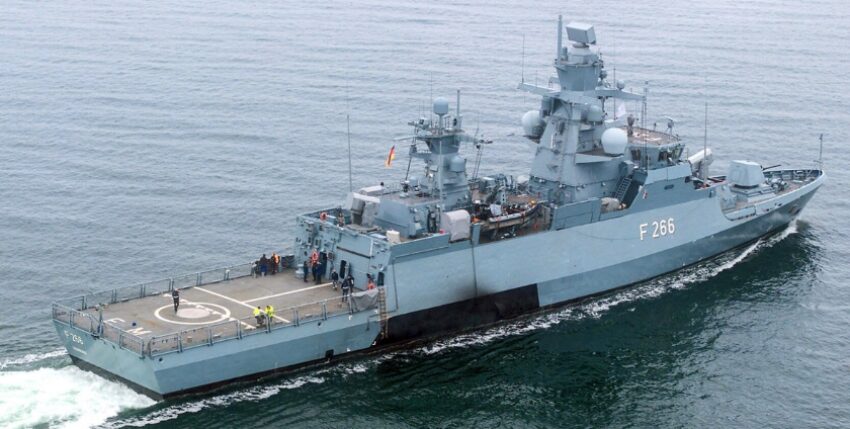Cause for concern, but please no hysteria - another explanatory piece
The inspector of the navy, Vice Admiral Jan C. Kaack, told the capital's press at the "Navy Talks" that there were suspected cases of sabotage on navy ships. He indicated that there had been damage to a boat during a shipyard visit, which gave rise to suspicions of sabotage. Several media outlets have since reported that the boat in question was the minehunter "Homburg" (M 1069), which was undergoing scheduled repairs at the Tamsen-Maritim shipyard on the Warnow. Unknown persons are said to have cut several cable harnesses. Informed circles speak of a bolt cutter as the tool used in the crime. Der Spiegel reports on investigations by the Rostock public prosecutor's office.
While the "Homburg" is a boat that is in active service with the German Navy, the incident at the Blohm & Voss shipyard in Hamburg at NVL ("Naval Vessels Lürssen") was somewhat different: the corvette "Emden" (F 266) does not yet belong to the German Navy and has not yet been handed over to the Bundeswehr (Federal Office of Bundeswehr Equipment, Information Technology and In-Service Support - BAAINBw). It was reportedly a few kilograms of metal shavings that were found in the propulsion system before they could cause any damage. Something like this can massively delay the completion of a ship. The difference is the responsibility for safeguarding. That is why the inspector did not comment on this.

There had been a fire on the fleet service boat "Alster" (A50) at the Norderwerft shipyard in Hamburg. The fleet service boat was also undergoing scheduled repairs in Hamburg. It was quickly surmised that it could be a case of sabotage, but according to information marine forum It was a "small electrical fire" that was extinguished by the crew themselves. The fire brigade checked the scene of the fire and even ordered fireboats to the dock - they were able to turn away again immediately.
Communication and the big plan
The announcements are sparse. There are no official statements from the shipyards, the navy or even the BAAINBw. This is not surprising in view of the investigations by the respective public prosecutor's offices, the criminal investigation department and the Bundeswehr. Of course, there is now speculation as to what else Russia is doing, apart from sabotaging pipelines, to unsettle us, or to "test" us, as the inspector called it. But initially this has little to do with the events surrounding a shadow fleet on Russia's behalf, except that one might suspect the same author. Just as one might suspect that the aggressor Russia is also behind the drone overflights and attempted intrusions into barracks. But then we would be accusing it of having a "grand plan". The possibility of such a plan cannot be ruled out. At present, however, there are at best indications, certainly no publicly known evidence - and certainly no arrests. And until there is something tangible, it is forbidden to communicate assumptions. This conjecture and speculation has a nasty side effect: every unplanned incident, every unexpected damaging event, no matter how trivial, leads to hysterical reactions! The "here we go again" effect does its bit and contributes to the uncertainty of the entire environment. Everyone knows that there is a high risk of fire in a shipyard due to the constant handling of tools and materials and that a wide variety of causes can lead to fires: Grinding dust in an electric motor, flying sparks during welding, or rags with solvents - none of these are new - strict fire and accident prevention has its good reason.
Is it really that simple?
If you wanted to damage a German Navy shipyard, how would that be possible? For the outsider, it should be described here that you can't just go onto a shipyard site, walk around and get up to mischief. In the context of awarding contracts to shipyards and companies, structural and personnel security is a very important part of the contract, because there is of course a considerable financial item behind this, which is based on the planning, personnel and material expenditure of the shipyard. This protection may require fencing, enclosures or other visual protection measures. In any case, there are access controls, both at sea and on land. And not only on and next to the ship, but especially underneath it, a stranger has no business being on board.

In practical terms, this means that once you have arrived at a site, you cannot access a unit for a long time. You are received, registered, given an access card, and only with this card can you cross the Stelling through a turnstile (personnel separation system). On board, you are registered as a visitor, both when you arrive and when you leave. This is only possible when accompanied, with authorisation and prior verification. And the visit should have a valid reason - "just having a look" is not acceptable.
Military crews are not the only ones authorised to do this, but also all persons involved in maintenance, shipyard employees and external companies. The multi-stage security checks for sabotage protection are complex and can take months or even years at the Military Counterintelligence Service (MAD). Suppliers and so-called external companies are also rigorously scrutinised. In day-to-day operations, this means that only authorised employees are allowed on site. Even large plant manufacturers only have a few authorised employees at the end of the day - if one is ill, another cannot simply step in. This often makes work tedious and slows down the workflow. The situation is similar in the halls: access barriers, code cards and recordings prevent uncontrolled access. It has been agreed not to disclose exactly how this works, as there is literally no "looking at the cards". And what about a submarine? No chance, you can't even get into the hall. Even the christening of such units becomes a secure event, especially in the case of the submarines for Israel from thyssenkrupp Marine Systeme.

If you look around the shipyards, you will also see foreign car number plates and hear foreign languages, because our neighbours in the East and West are involved in building our ships or are subcontractors. Even if it may seem strange in these times to hear an Eastern European language in the security sector: Poles, Lithuanians and others are allies - and they too are vetted. We must also assume that these people understand German for security reasons. And looking at strangers is not enough, internal perpetrators can never be ruled out.
If anyone thinks this is paranoid, it gets even better: the construction of large luxury and superyachts, a domain of some German shipyards, is even more exclusively secured. This is not just about protecting the owners, but also about highly sensitive discretion. German shipyards can do that too.
Why did it happen anyway? We don't know (yet). And once we know the background, be it individual failures, conceptual errors or simple sloppiness, then we will have to draw conclusions. This is absolutely necessary for war capability. Only this is to be feared: We cannot expect less paperwork and speedier completions with increased vigilance.











0 responses
Mr Ulrich Kaiser,
In the broadest sense, your comment fits in with the narrative broadcast in advance by the private media and örr
when it comes to prejudgement and anticipatory obedience.
I recommend the DDR DEFA film "Der Untertan" based on the novel by Heinrich Mann
All correct, but it can be assumed that a suspected saboteur will not use the official visitor entrance with controls etc., nor the "designated visiting times" (if there is such a thing).
I worked together with an Iranian, we repaired systems on the Oste, Okay, and the Alster.
We also attended the Lübeck Frankfurt and the MVP. I never understood how that could be . Some companies don't take security clearance very seriously .
Everyone is talking about the "shadow fleet" and only a few know the criteria for applying the term precisely.
Me neither.
Are they single-hull tankers?
Are there also other types of ships?
Ships prepared by Russians ?
Own Russian ships ?
To put an end to the problem with safety: Inspection of ships at SKAGEN, whereby single-hull tankers are no longer allowed to sail in the Baltic Sea.
Otherwise, international maritime law applies.
Dear Mr Werner,
Your questions are also ours. Thank you for that. We have tried to shed some light on the subject with the article "On the term shadow fleet".
Greetings, the editorial team